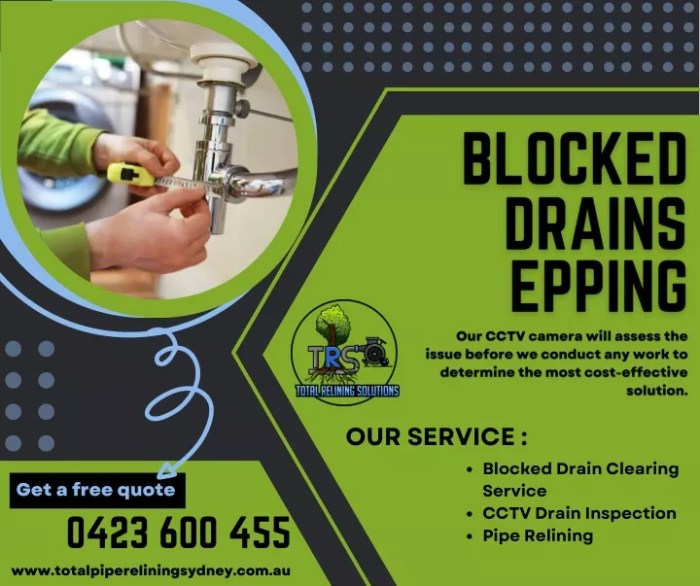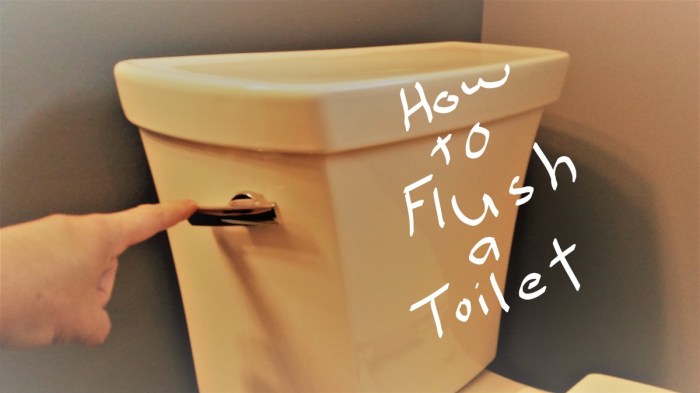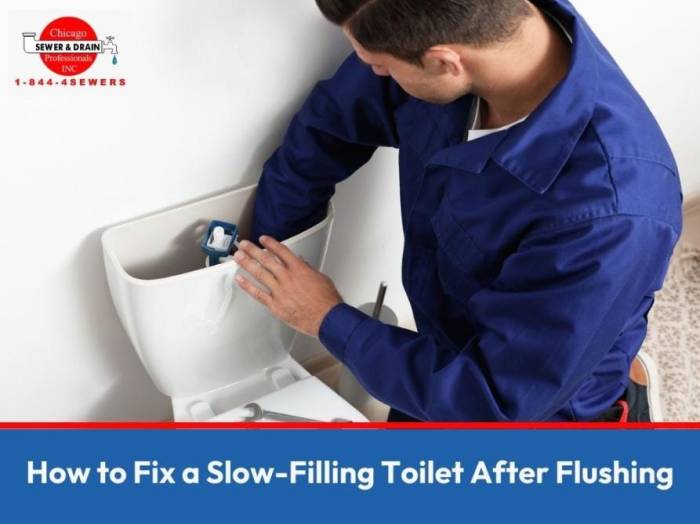Shower and Toilet Overflowing A Guide
Shower and toilet overflowing can be a frustrating and potentially damaging plumbing problem. This guide delves into the common causes, effective troubleshooting steps, and preventative measures to keep your plumbing systems in tip-top shape. Understanding the various scenarios, from minor clogs to major overflows, is crucial for swift and safe resolution.
We’ll explore the reasons behind overflowing showers and toilets, ranging from simple drainpipe issues to more complex fixture malfunctions. A detailed analysis of the problem, coupled with actionable solutions, will equip you to handle these situations confidently. This includes comparing and contrasting different overflow causes and solutions for both fixtures.
Causes of Overflowing Shower and Toilet
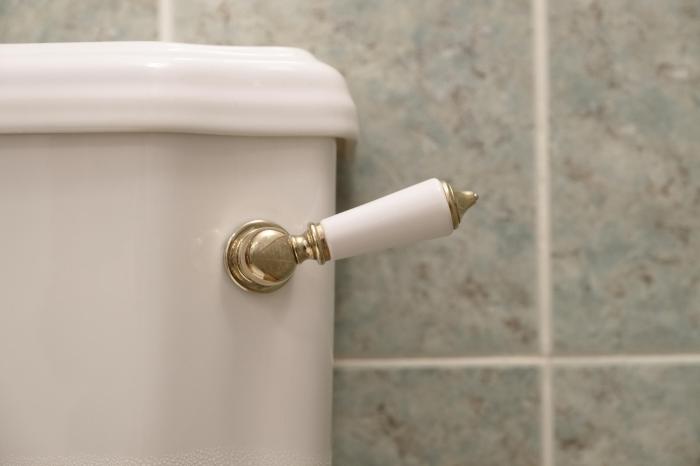
Source: benjaminfranklinplumbing.com
Overflowing showers and toilets can be a frustrating plumbing issue. Understanding the root causes can help homeowners address these problems efficiently and prevent future incidents. Prompt attention to these issues is crucial to avoid water damage and potential structural problems.
Shower Overflow Causes
Shower overflows often stem from issues within the drain system. Clogged drainpipes are a frequent culprit. Hair, soap scum, and other debris can accumulate, restricting water flow and leading to overflows. Similarly, a poorly maintained or faulty shower drain trap can become ineffective at containing water. This allows water to back up and overflow. Furthermore, issues with shower fixtures, such as a blocked showerhead or a faulty drain assembly, can contribute to overflow problems.
Toilet Overflow Causes
Toilet overflows are typically linked to malfunctions in the toilet’s mechanisms or blockages in the drain. Faulty flush valves or flappers can prevent proper water release, leading to a buildup of water in the bowl. Similarly, blockages from foreign objects or hardened waste can obstruct the drain and cause overflow. Improper flushing techniques, such as using excessive force or flushing inappropriate items, can exacerbate the problem.
Comparison of Shower and Toilet Overflow Causes, Shower and toilet overflowing
While both shower and toilet overflows can result from blockages, the specific causes often differ. Shower overflows are more frequently related to drainpipe and trap issues, whereas toilet overflows are more likely due to mechanical problems with the flush mechanism or significant blockages. Both, however, can lead to costly repairs and inconvenience.
Table of Overflow Causes
| Cause | Impact | Severity | Solutions |
|---|---|---|---|
| Clogged drainpipes (shower) | Water backs up, overflows, potential for water damage. | Moderate | Professional drain cleaning, removal of debris. |
| Faulty drain trap (shower) | Water doesn’t drain properly, resulting in overflow. | Moderate | Trap inspection and repair/replacement. |
| Blocked showerhead/drain assembly (shower) | Water flow is impeded, leading to overflow. | Minor to moderate | Cleaning of showerhead, repair of drain assembly. |
| Faulty flush valve/flapper (toilet) | Water doesn’t flush completely, leading to overflow. | Minor to moderate | Replacement of the flush valve/flapper. |
| Blockages (toilet) | Obstruction of the drain, causing overflow. | Moderate to severe | Removal of blockages, potential for plumbing services. |
| Improper flushing (toilet) | Excessive force or flushing inappropriate items can lead to damage and overflow. | Minor to moderate | Proper flushing techniques, avoidance of inappropriate items. |
Identifying the Problem
Pinpointing the precise cause of a shower or toilet overflow is crucial for effective and timely resolution. A thorough assessment helps determine the severity of the issue, enabling homeowners to address the problem efficiently and prevent further damage. This involves understanding the nuances of plumbing systems and the specific indicators of potential blockages or malfunctions.
Assessing Overflow Severity
Determining if an overflow is minor or major is essential for proper response. Minor overflows, often caused by temporary blockages or slight clogs, can usually be resolved with basic troubleshooting. Conversely, major overflows, resulting from significant blockages or structural issues, necessitate professional intervention to avoid further damage. Observing the extent of water accumulation and the presence of unusual sounds (like gurgling or bubbling) aids in this assessment. For example, a slow trickle from a shower drain could indicate a minor blockage, while a rapid flood of water suggests a more serious problem.
Locating the Source of the Blockage
The source of the blockage dictates the appropriate solution. To locate the source, carefully inspect the affected area. Check for visible debris, such as hair, soap scum, or foreign objects, in the shower drain or toilet bowl. Additionally, listen for unusual sounds or observe the water flow patterns to identify potential obstructions. This includes examining the showerhead, drain pipes, and trap for signs of clogging.
Troubleshooting Shower Overflows
- First, shut off the water supply to the shower. This crucial step prevents further water accumulation and damage. If the water supply is not easily accessible, the water should be turned off at the main valve.
- Next, inspect the shower drain for any visible obstructions. Remove any noticeable debris, such as hair or soap scum, from the drain opening and surrounding area. This can be achieved with tools like pliers or tweezers, ensuring care to avoid injury.
- If the obstruction remains, carefully use a drain snake or a plumber’s snake to dislodge any potential blockages. Ensure the snake is the correct size for the drain pipe to prevent damage.
- Once the blockage is removed, run the water to check for proper drainage. If the problem persists, consult a professional plumber for further inspection and resolution.
Troubleshooting and Solutions
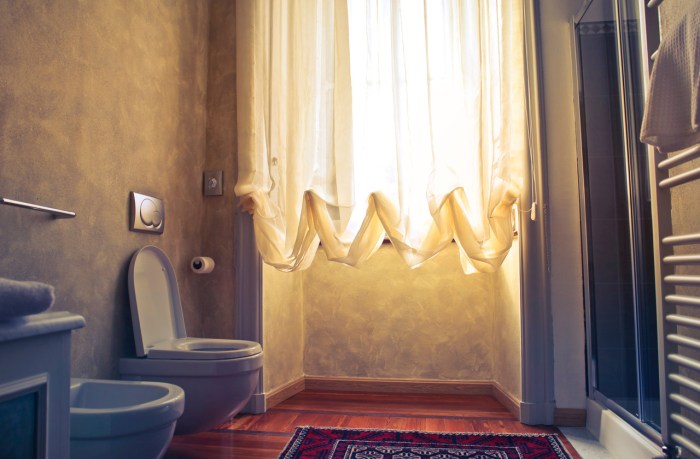
Source: caldwellplumbing.ca
Addressing overflowing showers and toilets requires a systematic approach, starting with identifying the root cause and progressing to effective solutions. A proactive approach to preventative maintenance can significantly reduce the frequency of these plumbing issues. Proper maintenance and timely intervention are key to avoiding costly repairs and potential damage to your property.
Minor Shower Overflow Fixes
Often, minor shower overflows can be resolved with simple fixes. These solutions frequently involve clearing blockages and ensuring proper water drainage. Regular maintenance, such as checking for debris and cleaning drain lines, is crucial to prevent recurring issues.
- Inspect and Remove Debris: Carefully inspect the shower drain for any visible blockages, such as hair, soap scum, or other foreign objects. Use tongs or a drain snake (a flexible tool) to remove any obstructions. A common preventative measure is to use a drain strainer to catch hair and debris before it enters the drain.
- Clean the Shower Drain: Use a drain cleaner specifically designed for showers. Follow the product instructions carefully. If the blockage persists, consider using a plumber’s snake to dislodge the clog. This tool can reach further into the drainpipe and is particularly useful for stubborn clogs.
- Check the Drain Pipe: Ensure the drainpipe is properly sloped to allow water to flow freely. A slight change in the pipe’s position can impede drainage. If necessary, consult a professional to ensure the correct slope.
- Preventative Measures: Use a drain strainer to catch hair and debris. Regularly clean the shower drain to avoid build-up. Use a drain cleaner as needed. Consider installing a drain cover to prevent large objects from entering the drain.
Toilet Overflow Solutions
Toilet overflows often stem from blockages, typically involving toilet paper, sanitary items, or other foreign objects. Addressing the problem swiftly is essential to avoid potential damage and unpleasant odors.
- Locate and Remove the Blockage: Carefully examine the toilet bowl for visible blockages. If possible, use a plunger to dislodge the clog. If the plunger fails, use a toilet auger (a plumbing tool) to clear the blockage. Be cautious when using these tools to avoid damaging the toilet.
- Check the Toilet Trap: Inspect the toilet trap for any blockages. Sometimes, the trap itself can be clogged, preventing water from draining properly. If this is the case, carefully clean the trap or replace it if necessary.
- Flush the Toilet: Try flushing the toilet repeatedly, but be prepared to use other methods if the blockage persists. This may help dislodge smaller blockages.
- Consider Professional Help: If the blockage is severe or persists after trying these methods, consult a plumber. A plumber can use specialized tools or techniques to effectively clear the blockage.
Comparing Overflow Solutions
The following table provides a comparative analysis of various solutions for shower and toilet overflows, considering cost, time, and effort involved.
| Solution | Materials | Steps | Time | Cost |
|---|---|---|---|---|
| Shower Drain Cleaning (Simple) | Drain cleaner, tongs/tweezers, drain strainer (optional) | Inspect drain, remove debris, use drain cleaner (if needed), ensure proper slope | 15-30 minutes | $5-$20 (depending on cleaner) |
| Toilet Plunging | Plunger | Identify blockage, apply plunger pressure, repeat as needed | 15-45 minutes | $0 (if plunger is already available) |
| Toilet Auger (Snake) | Toilet auger | Insert auger into drain, rotate to break up blockage, remove auger | 30-60 minutes | $10-$30 (for rental or purchase) |
| Plumber’s Assistance | Plumber’s expertise, specialized tools | Professional diagnosis and clearing of blockage | 1-3 hours | $75-$250+ (depending on complexity) |
Prevention and Maintenance
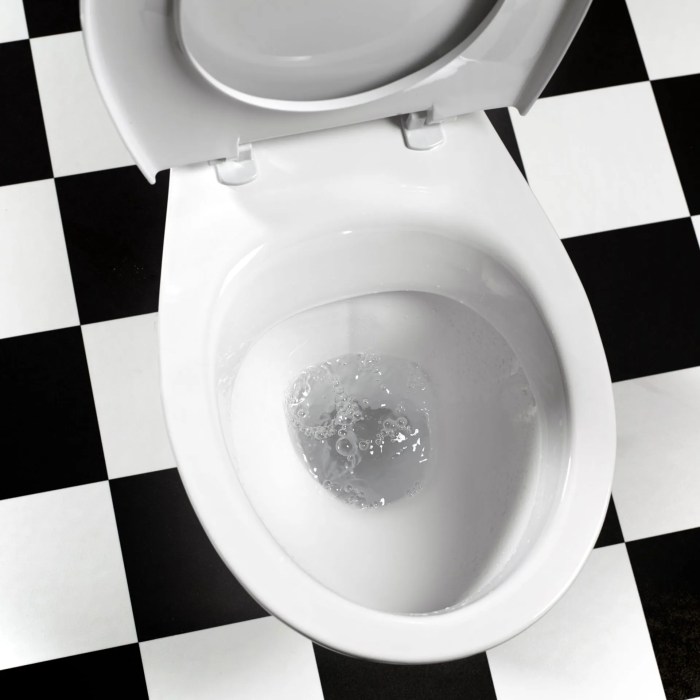
Source: cdn-website.com
Proactive measures are crucial in preventing shower and toilet overflows. Regular maintenance minimizes the risk of clogs and blockages, ensuring smooth operation and preventing costly repairs. By understanding the preventative measures, homeowners can maintain a functional and safe plumbing system.
Implementing preventative maintenance practices ensures the longevity of your plumbing fixtures and minimizes the potential for costly repairs. Understanding the common causes of overflows allows for proactive measures to mitigate these issues.
Maintaining Shower Systems
Regular cleaning of shower drains is essential to prevent clogs. Removing hair and debris is vital to maintaining proper water flow. Using drain cleaners periodically, following product instructions, can help remove stubborn clogs. Employing a drain strainer is a cost-effective way to prevent debris from entering the drain. A drain strainer, placed at the shower drain opening, effectively catches hair and other debris before it reaches the drain pipes.
Maintaining Toilet Systems
Proper flushing techniques and regular maintenance are key to preventing toilet overflows. The correct amount of water and the right flushing pressure are crucial for effective waste removal. Avoid flushing items that are not intended for the toilet, such as feminine hygiene products or excessive amounts of paper, as this can contribute to blockages. Furthermore, ensuring the toilet tank is properly filled with water is vital for efficient flushing. Inspecting the tank regularly for any leaks is critical for optimal performance.
Preventing Clogs and Blockages
Preventing clogs in drains and pipes is a vital aspect of maintaining a functional plumbing system. Using a drain strainer or a hair catcher is a simple preventative measure. The use of drain strainers and hair catchers significantly reduces the likelihood of clogs, particularly in showers. Moreover, avoid pouring grease, oil, or other fats down the drain, as these substances can solidify and create blockages. Regular cleaning of drains with appropriate tools and drain cleaners, when necessary, is vital to prevent buildup.
Proper Flushing Techniques
Appropriate flushing techniques are essential for effective toilet operation. The use of proper flushing techniques significantly reduces the risk of overflows. Avoid flushing excessive amounts of paper or foreign objects down the toilet. Furthermore, ensure the toilet tank is properly filled with water to ensure efficient flushing.
Importance of Regular Maintenance
Regular maintenance is essential for preventing future issues. Routine inspections and cleaning help maintain proper water flow and prevent blockages. Addressing minor issues promptly is key to avoiding larger, more costly problems down the road. A proactive approach to maintenance saves money and prevents potential plumbing disasters.
Preventive Measures
- Regularly clean shower drains and remove hair and debris.
- Use drain strainers to prevent clogs.
- Avoid pouring grease, oil, or other fats down the drain.
- Use appropriate drain cleaners as needed, following product instructions.
- Inspect and maintain toilet tanks for leaks and proper water levels.
- Avoid flushing non-flushable items down the toilet.
- Use the appropriate amount of toilet paper for each flush.
- Schedule regular plumbing inspections and maintenance.
Visualizing Overflow Scenarios

Source: com.au
Understanding the visual cues of overflowing showers and toilets is crucial for prompt identification and resolution. Early detection minimizes potential damage and the associated inconvenience. Recognizing the different stages and water characteristics can help pinpoint the underlying cause and guide effective troubleshooting.
Overflows, whether in a shower or a toilet, often present recognizable patterns. Analyzing the water’s appearance and the extent of the spill can provide valuable insight into the source of the problem. This visualization helps in identifying the severity and potential damage, leading to efficient solutions.
Shower Overflow Scenarios
Early stages of shower overflow may manifest as a slow but steady trickle of water around the base of the shower enclosure or onto the floor. This initial leak can often be contained with a timely intervention. More advanced stages might involve a larger pool of water accumulating on the floor, potentially spreading to adjacent areas. The water’s appearance in these cases will typically be clear, possibly tinged with soap scum or residue depending on the usage. Significant overflow, particularly if caused by a blocked drain or a faulty drainpipe, can result in a torrent of water flooding the shower area. This rapid overflow is characterized by a forceful discharge of water, potentially causing significant water damage to the surrounding surfaces and fixtures.
Toilet Overflow Scenarios
Toilet overflows can vary in severity, depending on the blockage’s location and the rate of water inflow. A minor overflow might be characterized by a slow seepage of water around the base of the toilet bowl. The water will likely appear clear. A moderate overflow might involve a larger pool of water accumulating in the toilet bowl, potentially reaching the rim. Again, the water is generally clear, but the level of water buildup is more substantial. A severe overflow, typically resulting from a complete blockage, will flood the toilet bowl and spill over onto the surrounding floor. The water level may be significantly higher than the bowl rim. In this scenario, the water may show discoloration or contain other materials from the blockage, such as paper or debris.
Identifying Overflow Causes Based on Water Appearance
The appearance of the overflowing water can provide clues about the underlying cause. Clear water, with no noticeable debris or discoloration, often indicates a problem with the plumbing system, such as a blocked drain or a faulty drainpipe. If the water is discolored, it could indicate a blockage in the toilet or shower drain. For example, a greenish tint might point to a decaying blockage, while a brown tint might suggest a buildup of soil or other debris. The presence of visible debris, such as toilet paper or foreign objects, directly points to blockages in the drain or pipes.
Visual Cues for Overflow Problems
- Shower Overflow
-
- Slow trickle of water around the base of the shower enclosure.
- Accumulation of water on the shower floor, spreading to adjacent areas.
- Torrent of water flooding the shower area.
- Presence of soap scum or residue in the water.
- Toilet Overflow
-
- Slow seepage of water around the base of the toilet bowl.
- Water accumulating in the toilet bowl, potentially reaching the rim.
- Water flooding the toilet bowl and spilling over onto the surrounding floor.
- Discoloration of the water, such as green or brown tint.
- Presence of visible debris (toilet paper, foreign objects) in the water.
Safety Precautions: Shower And Toilet Overflowing
Dealing with overflowing plumbing systems requires careful consideration of safety to prevent injuries. Improper handling of water damage or blockages can lead to slips, falls, electric shock, and exposure to harmful substances. Understanding and adhering to safety precautions is paramount to ensuring a safe and successful resolution to the issue.
Potential Safety Hazards
Improper handling of plumbing issues can pose several hazards. It’s crucial to recognize these potential dangers to take necessary precautions.
- Electric Shock: Electrical components, such as pumps and water heaters, are often connected to the plumbing system. Working near these components without proper safety measures can lead to electric shock.
- Chemical Exposure: Clogged drains may contain harmful chemicals or substances that can cause skin irritation or other health issues. Improper handling of these substances can result in health problems.
- Slips and Falls: Flooded areas can be extremely slippery, increasing the risk of slips and falls. Standing water and wet surfaces should be treated with caution.
- Water Damage: Significant water damage can lead to mold growth and other health risks if not handled promptly and safely. Exposure to mold and mildew can cause respiratory problems.
- Sharp Objects: Some blockages may involve sharp objects, like broken pipes or debris. Improper handling can result in cuts or lacerations.
Mitigating Injury Risks
To minimize the risk of injury when addressing water damage or blockages, adopt a cautious approach. Safe practices are essential to prevent accidents.
- Personal Protective Equipment (PPE): Always wear appropriate PPE, including gloves, safety glasses, and rubber boots, to protect yourself from potential hazards.
- Proper Lighting: Ensure adequate lighting in the affected area to clearly see potential hazards and work safely.
- Secure Environment: Create a secure and stable working environment to avoid slips, falls, or other accidents.
- Ventilation: If dealing with substances that release harmful fumes or gases, ensure proper ventilation in the area.
- Professional Help: If the situation is beyond your abilities, contact a qualified plumber or professional for assistance.
Shutting Off the Water Supply
Knowing how to shut off the water supply is crucial in managing a major overflow. A systematic approach ensures safety and prevents further damage.
- Identify the Main Shut-Off Valve: Locate the main water shut-off valve for your home. This is typically located near the water meter or in a utility closet.
- Turn Off the Valve: Carefully turn the valve clockwise to shut off the water supply. Ensure it’s fully turned off to prevent water flow.
- Check for Leaks: After turning off the valve, check for any leaks around the shut-off valve or other plumbing fixtures to ensure the water is completely stopped.
- Call a Plumber (if needed): If the overflow is severe or you’re unsure about the procedure, contact a qualified plumber for assistance. Professional help is essential to avoid further damage or injuries.
Final Summary
In conclusion, addressing overflowing showers and toilets requires a comprehensive understanding of the potential causes, from clogged drains to faulty mechanisms. This guide provides a structured approach to identifying the problem, implementing effective solutions, and ultimately preventing future occurrences. By understanding the various scenarios and implementing the suggested preventative measures, you can maintain a functional and trouble-free plumbing system.

